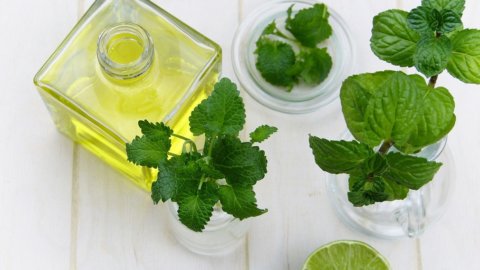It's time to buy the oil. In this period (a few months after pressing and for at least twelve months) the oil best expresses its perfume and nutritional characteristics. It has a clear appearance that enhances the numerous shades of color, from intense green to straw yellow. Punctual as every year comes out the Guide to Extra Virgin Olive Oils of Slow Food Italy, a reasoned picture of Italian quality oil which over one hundred collaborators have identified by crossing the length and breadth of the peninsula An indispensable tool not only for those who buy this still little-known product that is part of our daily lives, but also for women producers of good, clean and fair Italian extra virgin olive oil, who can thus make themselves known and build a necessary dialogue with buyers. Central element of the Mediterranean Diet: «Extra virgin olive oil – he says Barbara Nappini, president of Slow Food Italy - it is not a simple condiment, but a nutraceutical food, able to provide the body with essential substances that also help prevent numerous diseases.
A tool to learn about oil, who produces it, where and how
The guide is a valid one tool to learn about oil, who produces it, where and how. For this reason, Slow Food has been promoting the narrating label for years, where every producer can tell us what we are buying in all its aspects». For now, the label is already on the packaging of the oils that are part of the Secular Olives Presidium (also recognizable by the Presidia logo on the bottle), a project that promotes the environmental, landscape, health and economic value of ancient olive groves of native cultivars and which brings together producers who do not use synthetic fertilizers and chemical herbicides.
The oil for the Veronesi Foundation "Elixir of long life"
An "Elixir of life", this is how the Veronesi Foundation defines extra virgin olive oil. And rightly so. On the Foundation's website, in relation to its many properties, we read: “Among the many properties of extra virgin olive oil there is definitely that of protect our arteries. This occurs through the regulation of cholesterol levels circulating in the blood. This parameter, feared by all when it comes to haematological tests, is one of the most important factors related to cardiovascular risk. High levels of LDL cholesterol, also called "bad", are in fact a cause of the formation of atherosclerotic plaques, those narrowing of veins and arteries which in the long run can cause heart attacks and strokes. With the extra virgin olive oil levels of bad cholesterol are lowered. Not only that, but the good one, also known as HDL, is not altered in the slightest. Therefore, the olive juice represents, as well as a tasty condiment, an excellent form of prevention of cardiovascular risk. And what about the anti-aging effects? The extra virgin olive oil is a mine of antioxidants, including vitamin E, tocopherol and various phenolic compounds. All molecules capable of defending our body from premature aging by fighting free radicals. The latter are mainly responsible for the cellular damage typical of age. They are particularly reactive forms of oxygen, i.e. very powerful molecules capable of damaging DNA and, in the long run, triggering the genesis of tumours. Thanks to the oil, the antioxidants contained in it neutralize the dangerous radicals thus ensuring the longevity of the cells. But the properties of extra virgin olive oil don't end there. The digestive system is also beneficial. L'in fact, oil is able to reduce the secretions of gastric acids and consequently the danger of ulcers. Furthermore, it also affects the liver. Thanks to its balanced composition of fats it has a high detoxifying power. In addition to keeping cholesterol levels at bay, it is indicated to counteract cellular aging. Excellent when used raw, it is the ideal condiment for dishes of the Mediterranean diet
766 companies including mills, farms and oil mills, 1227 oils tested
The guide reviews 766 realities including mills, farms and oil mills (126 new products testifying to a lively sector), 1227 oils among the over 1600 tasted. The number of companies (indicated with the leaf) that certify the entire supply chain as organic (as many as 531 oils reported) and the oils (175) from the Secular Olives Presidium (recognizable by the Slow Food snail). There is no shortage of easily identifiable classic awards: the Large gray snail indicates companies (40) that stand out for the way they interpret production values (sensory, territorial and environmental) in line with the Slow Food philosophy; The Grande Olio (81), indicated with the design of the Olive, is attributed to extra virgin olive oils that have distinguished themselves for particular qualities from an organoleptic point of view and because they well reflect the territory and cultivar. To these characteristics, the Grande Olio Slow (124), recognizable by the writing slow in a green field, rewards the activity of companies that adopt sustainable agronomic practices for the environment and for the worker.
The guide also gives us some hopes, Francesca Baldereschi, editor of the Guide to Extra Virgin Olive Oils: «First of all, the constant growth in the quality of the oils offered - continues Francesca Baldereschi - which manage to tell all the nuances of flavors of the numerous varieties present in Italy. Growth of young producers, if on the one hand there is a decrease in the olive area, on the other there are new entries of farmers who take over the management from their parents or who take over abandoned family olive groves. Connected to this phenomenon, but also to an increased ecological awareness, is the growth of the organic oils reviewed. A constant growth from year to year».
Snails to companies which stand out for the way they interpret the production values: organoleptic, territorial and environmental
Abruzzo
Tommaso Masciantonio – Casoli (Ch)
Davide Iacovella – Chieti
Mercurius oil mill – Penne (Pe)
Gardens of Julius – Tocco da Casauria (Pe)
Calabria
Agricola Doria – Cassano allo Ionio (Cs)
Campania
Maria Ianniciello – Grottaminarda (Av)
Lands of Molinara – Molinara (Bn)
Liguria
Pedro Oil – Pietra Ligure (Sv)
Lazio
Etruscan hills – Blera (Vt)
Mandrarita – Itri (Lt)
Sciuga – The Mill – Montefiascone (Vt)
Paola Orsini – Priverno (LT)
Marche
Fiorano – Cossignano (Ap)
Barbara Pacioni – Montegranaro (FM)
Agrobiological Foglini Amurri – Petritoli (Fm)
The Three Rows – Recanati (Mc)
Molise
Giorgio Tamaro – Termoli (Cb)
Sacred Land – Termoli (Cb)
Puglia
De Carlo – Bitritto (BA)
Vallillo – Serracapriola (Fg)
Sardinia
Antonella Anna Maria Orrù – Siamaggiore (Or)
Masoni Becciu – Villacidro (CA)
Sicilia
Terraliva – Buccheri (Sr)
Vernera – Buccheri (Sr)
Agrobiological Red – Chiaramonte Gulfi (Rg)
Titone – Misiliscemi (Tp)
Vincenzo Signorelli – Nicolosi (Ct)
Cavasecca Estate – Syracuse
Toscana
At the Camellias – Capannori (Lu)
Lenzini Estate – Capannori (Lu)
Leonardo Salustri – Cinigiano (Gr)
Stefano Spinelli – Lamporecchio (Pt)
Altomena Farm – Pelago (Fi)
Val di Lama – Pontedera (Pi)
Trentino Alto Adige
Laghel7 – Arco (Tn)
Maso Bòtes – Arco (Tn)
Umbria
The Pietraie – Città di Castello (Pg)
Augusto Coli – Marsciano (Pg)
Fontanaro – Paciano (Pg)
Veneto
La Contarina – Illasi (Vr)
The Grandi Oli Slow, excellent oils, which stand out for their sensory characteristics, close relationship with the territory and cultivar region by region
Campania
Daphne of Torretta – Battipaglia (Sa)
Alter Ego by Nicolangelo Marsicani – Morigerati (Sa)
Secret of Oleificio Romolo – Ariano Irpinio (Av)
Calabria
Lively Calabria by Frantolio Acri Velvety – Corigliano Rossano (Cs)
OrOlio Limited Edition by Fratelli Renzo – Corigliano Rossano (Cs)
Blend of Oleificio Torchia – Tiriolo (Cz)
Dolciterre Rosì by Sorelle Garzo – Seminara (Rr)
Emilia Romagna
Brisighello Dop Brisighella and Nobildrupa di Terra di Brisighella – Brisighella (Ra)
Ascolana of Podere La Torre – Roncofreddo (Fc)
Cast Gold of Oleificio Sapigni – Verucchio (Rn)
Friuli-Venezia Giulia
Olive groves and Dagla by Boris Pangerc Colture – San Dorlingo della Valle (Ts)
Lazio
Dop Tuscia of Etruscan Hills – Blera (Vt)
Caieta and Don Pasquale Dop Pontine Hills by Cosmo Di Russo – Gaeta (Lt)
Novolio and Cetrone In Alfredo Cetrone – Sonnino (Lt)
Electum of La Selvotta – Vasto (Ch)
Liguria
Extreme of La Baita & Galleano – Borghetto d'Arroscia (Im)
Extremum by Paolo Cassini – Isolabona (Im)
Puglia
Terrematte by Francesco Leonetti – Andria (Bt)
Coratina of Pantaleo Di Molfetta – Bisceglie (Bt)
Felice Garibaldi's oil by De Carlo – Bitritto (Ba)
Cima di Bitonto of Cultivated Love – Bitonto (Ba)
Post Locone of Fratelli Ferrara – Foggia
Mimì – Ogliarola by Donato Conserva – Modugno (Ba)
Coppadoro of Ciccolella – Molfetta (Ba)
Alfieri – Coratina di Tedò – Ruvo di Puglia (Ba)
Evo Agape of Agape – Sannicandro of Bari (Ba)
Casino Mezzanola of Pannarale – Torremaggiore (Fg)
Blend of Visconti – Torremaggiore (Fg)
Sardinia
Nuragikus and Semidana of Olearia Medda – Barumini (Ca)
Sicilia
Sciabacco by Francesca Tumino – Mazzarone (Ct)
Salvatore Cutrera – Nocellara of Frantoi Cutrera – Chiaramonte Gulfi (Rg)
Oliosarullo of Oil Mill Gaspare Sarullo – Ribera (Ag)
Intense by Oleificio Sant'Anna – Marsala (Tp)
In Firrisa of Santa Barbara – Solarino (Sr)
Frantoio Galioto Moresca 03 and Frantoio Galioto Dop Monti Iblei 04 by Sebastiana Fisicaro – Ferla (Sr)
Sapta PGI Sicily by Vincenzo Ventura – Biancavilla (Ct)
The Oil of Teacher Tina Igp Sicilia by Giuseppe La Pira – Canicattini Bagni (Sr)
Toscana
Maurino di Reto di Montisoni – Bagno a Ripoli (Fi)
The Moraiolo of the Casini Santi heirs – Bucine (Ar)
Leccino of Tenuta Il Leccio – Bucine (Ar)
Laudemio of Fattoria di Volmiano – Calenzano (Fi)
Maurino by Cesare Diddi Mussi – Casale Marittimo (Pi)
Igp Toscano Bolgheri and 1979 of Fonte di Foiano – Castagneto Carducci (Li)
IgpToscano – Bardelli oil mill since 1941 – Larciano (Pt)
Reserve and First Tuscan Igp Olive from Frantoio di Croci – Massa and Cozzile (Pt)
Evo Cavozzoli Reserve of Podere Cavozzoli – Montecatini Terme (Pt)
Maurino di Solaia – Montespertoli (Florence)
You like it! by Luca Varini – Pieve a Nievole (Pt)
Selection O! of Grevepesa oil mill – San Casciano in Val Pesa (Fi)
Maurino of I Greppi di Silli – San Casciano in Val Pesa (Fi)
Holm oak of the Corno di Maryamado – San Casciano in Val Pesa (Fi)
Trentino Alto Adige
Tenuta Ferruccio Dop Garda Trentino of Brioleum – Arco (Tn)
46th Parallelo – casaliva and Uliva Dop Garda Trentino of Frantoio di Riva – Riva del Garda (Tn)
Umbria
Moraiolo and N° 51 of Decimi – Bettona (Pg)
Marfuga Reserve Dop Umbria Colli and Assisi Spoleto di Marfuga – Campello sul Clitunno (Pg)
Cardinal oil by Luigi Tega – Foligno (Pg)
Moraiolo and San Felice of Agricola Locci – Giano dell'Umbria (Pg)
Sincere of Viola – Foligno (Pg)
Gold of Frantoio Speranza – Giano dell'Umbria (Pg)
Instant and Sesto of Frantoio Loreti – Gualdo Tadino (Pg)
Borgiona and Vubia of Castello Monte Vibiano Vecchio – Marsciano (Pg)
Riano and Alessandro Ricci's oil mill – Montecchio (Tr)
Moraiolo of Passo della Palomba – Todi (Pg)
Veneto
Green Selection of Cornoleda oil mill – Cinto Euganeo (Pd)
Grignano by Luigi Ruffo – Illasi (Vr)
Campo delle Marogne and Campo Storico of Erminio Cordioli & C. – Verona
Donna Emme Dop Veneto Valpolicella by Monica Vaccarella – Verona





